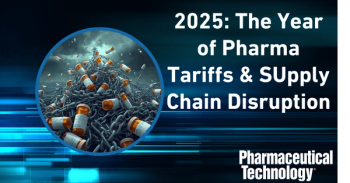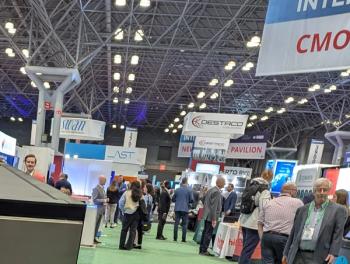
PTSM: Pharmaceutical Technology Sourcing and Management
- PTSM: Pharmaceutical Technology Sourcing and Management-03-05-2014
- Volume 10
- Issue 3
Regulatory Initiatives Spur API Supply Chain Security
In order to ensure a safe drug supply chain, governments have implemented both legislated and voluntary programs designed to address problem areas.
With the growth in manufacturing of APIs and formulated drugs around the world, there has been increasing pressure on government agencies to ensure that all products entering the drug supply chain meet necessary safety and quality requirements. In fact, several incidents with dire consequences have brought attention to the need for increased security within the global drug supply chain. Governments and regulatory agencies have responded with the adoption and implementation of both legislated and voluntary programs designed to address many of the issues that have caused problems in the past. While some of these initiatives are focused particularly on formulated drug products or other raw materials (e.g., excipients), others target APIs and will thus have a direct impact on API manufacturers.
The US: increasing resources and streamlining operations
In the United States, the Drug Quality and Security Act (DQSA) was signed into law by President Obama on November 27, 2013. This law will largely impact drug manufacturers and most notably contains requirements in Title II for the identification and tracing of certain prescription drugs that are distributed in the US (1). FDA is responsible for administering this and other programs established by the DQSA. While the DQSA does not directly affect API manufacturers, John DiLoreto, executive director of the Bulk Pharmaceuticals Task Force (BPTF) of the Society of Chemical Manufacturers and Affiliates (SOCMA) is glad to see that GMPs are being expanded to compounded drugs. “We recognize that any safety problems with a drug product reflect on the entire drug industry and thus have a negative impact on all members of the supply chain,” DiLoreto notes.
FDA has also been actively developing guidance and other materials associated with the Food and Drug Administration Safety and Innovation Act (FDASIA), which was signed into law on July 9, 2012. Most relevant to the global drug supply chain is Title VII of the statute, which includes provisions that give FDA new authorities to detain drugs of questionable origin, penalize companies for delaying, denying, limiting or refusing inspection, and increase the fines for adulterated and counterfeit drugs (2).
The FDASIA also grants FDA the authority to establish mechanisms for more rapid approval of drugs for patients with serious or life-threatening diseases and collect user fees from various sectors of the pharmaceutical industry (e.g., prescriptions drugs, generic drugs, biosimilars, and medical devices) that will be used to fund reviews of innovator drugs, medical devices, generic drugs, and biosimilar biological products and inspections of international manufacturing facilities.
The BPTF is particularly encouraged by this development, because it has been working closely with members of Congress, FDA staff, and industry leaders to address FDA’s lack of resources for conducting GMP inspections of foreign drug manufacturers. “Industry is eager to see FDA increase its inspections of foreign manufacturing sites, not only to increase the safety of the API supply chain, but also to level the playing field for companies that already invest in programs and processes that ensure the safety and quality of their products,” DiLoreto observes. DiLoreto is gratified to see that FDA has also been able to work with the Chinese government, which seems to be establishing an inspection protocol for Chinese sites that is similar to the one the agency uses for domestic firms. Section 705 of the FDASIA, in fact, requires FDA within its two-year drug inspectional frequency requirement to use a risk-based scheduling approach for domestic and foreign drug facilities (2). Inspection criteria include the establishment’s compliance history and the inherent risk of the drug being manufactured. The agency is currently developing risk-based methodologies for inspections to reflect the statutory criteria and is working to establish common risk principles across the various centers.
FDA is also revising existing cGMP regulations to update and harmonize requirements and improve detection of and response to emerging product safety and quality signals (2). Finally, Section 712 of FDASIA allows FDA to enter into written agreements with foreign governments to recognize the inspection of foreign drug establishments, and the agency is currently determining how this authority can be used to advance existing efforts in this area and further FDA’s goal of relying on foreign government inspections.
Most recently, FDA began accepting applications for its voluntary Secure Supply Chain Pilot Program (SSCPP), which is intended to enable 100 qualified firms to expedite the importation of up to five APIs and/or finished drug products into the US while allowing the agency to focus its import surveillance resources on preventing the entry of high-risk drugs that are the most likely to compromise the quality and safety of the US drug supply, according to the agency. The program is related to section 713(4)(B)(i) of the FDASIA, which covers the required submission of compliance information.
Participating firms in the SSCPP program must be the new drug application/abbreviated new drug application sponsor or the foreign manufacturer of the product, comply with cGMP regulations and be in compliance with registration and listing requirements outlined in sections 510(i) and 510(j) of the Federal Food, Drug and Cosmetic Act, and commit to securing their drug-supply chains as participants in the Customs-Trade Partnership Against Terrorism (C-TPAT). The SSCPP is jointly administered by FDA’s Center for Drug Evaluation and Research (CDER) and Office of Regulatory Affairs (ORA) and will run from February 2014 through February 2016. On Feb. 18,
The agency will use the information gathered, such as the timeframe for passage of products through the imports entry process, the level of adherence to program requirements, and the overall impact of the program, to develop its approach to implementing the FDASIA. Janeen Skutnik-Wilkinson, vice-president of Health Sciences at NSF International explains, “FDASIA, DQSA, and SSCPP codify into law the practices and expectations that FDA has been emphasizing since 2008. It is important to recognise that the FDASIA has far-reaching implications for the pharmaceutical industry. To date, most pharmaceutical manufacturers and the media have focused on FDASIA’s high-profile provisions related to user fees, but several provisions of the law focus on ensuring safety and quality in the increasingly global pharmaceutical supply chain. After the 2008 Heparin contamination incident and the questions it raised about pharmaceutical safety, it’s no surprise that global supply chain safety provisions found their way into the pages of the FDASIA.
Europe: refining and expanding legislation
In the European Union, the European Medicines Agency (EMA) has implemented the API import provisions of the Falsified Medicines Directive (FMD) and has revised its GMP Annex 16, which outlines the responsibilities for Qualified Persons (QPs) (3). The main new requirement of the FMD is that pharmaceutical companies can only purchase APIs from suppliers that have received GMP certificates. “The original hope was that the amount of work might be reduced, since API suppliers would all be inspected by the authorities,” says Christine Morris, an associate with ISIS Pharmaconsulting. “However, that is not the case; pharma manufacturers still must conduct their own audits. Therefore, we don’t expect any real changes in product quality, other than perhaps for material coming from manufacturing sites outside of the EU and the US.” It appears, however, that an unintended consequence of the FMD is an increase in API prices as suppliers respond to the increase in audit and compliance requirements.
Fortunately, according to Pete Gough, executive director of Health Sciences at NSF International, the impact of implementing the FMD has not been as problematic as some had feared with respect to reported shortages of medicinal products due to issues with importing APIs from outside of the EU. However, it is possible that many companies imported and stockpiled APIs ahead of the July 2013 deadline for implementing the new import requirements, and therefore, some problems may still emerge once these stockpiles are exhausted. Many companies in the US were concerned about meeting the requirements of the FMD, according to DiLoreto. “These concerns have been addressed with an agreement between the US authorities and the EMA,” DiLoreto explains.
The proposed changes to Annex 16 are largely welcomed, according to Gough, because there was a real need to harmonize QP responsibilities across the EU. However, there are areas that still must be addressed, such as harmonization of terms within the Annex with other parts of the GMP Guide.
China: will regulatory changes have an impact?
In October 2010, the new version of the Chinese Pharmacopoeia was adopted that included new and revised drug monographs as well as newer production technologies and analytical techniques that are used internationally for drug quality control. This action was followed by the introduction of revised GMP regulations by the Chinese State Food and Drug Administration (CFDA) in March 2011 (4). These regulations are modeled after those in the US and Europe and include more specific requirements for drug manufacturing than the previous version. However, it remains to be seen if these changes will have any impact. “We still have yet to determine if these new GMP expectations can be effectively applied and if the CFDA can enforce them,” Gough comments.
Efforts at harmonization
Moves to harmonize international GMP requirements continue to progress, but very slowly, and Gough believes recent moves to share inspection outcomes across various countries and regions, and particularly between the EU and US, might be of more practical interest. “Such sharing will enable authorities to focus GMP inspections on the regions that pose the highest potential risks for both GMP non-compliance and of counterfeiting, e.g., Asia,” Gough says. SOCMA’s BPTF strongly supports the sharing of information across countries to the greatest extent feasible as a way to eliminate duplicate work and free up resources for increased inspections where they are most needed, according to DiLoreto. Morris, however, believes that while harmonization of regulatory requirements is possible, the actual acceptance of other agency inspection results won’t take place for some time, because the different authorities have very different approaches.
Making progress
Even so, Morris does believe that the global drug and API supply chains are more secure than in the past. “There is much more awareness within pharmaceutical companies of the importance of supply-chain management and the need to have greater knowledge of the supply chain,” she states. DiLoreto adds that the industry is headed in the right direction, with better regulations and more inspections across the globe. Gough points to India’s plan to increase inspections and China’s closure of alleged producers of counterfeit drugs as further good signs. Both Gough and DiLoreto, however, note that it is too soon to judge which initiatives will be effective, because many of the legislative changes are in the early stages of implementation.
“It is imperative though,” asserts Gough, “that pharmaceutical companies comprehensively map their supply chains and then conduct a risk assessment to identify potential vulnerabilities. It is surprising just how many companies still do not have a clear picture of their supply chains.” API manufacturers must ensure that they can demonstrate compliance with cGMP regulations for APIs and other requirements for APIs as outlined in the new and proposed legislation discussed above.
References
1.
2.
3. EC,
4. Chinese Food and Drug Adminstration,
Articles in this issue
almost 12 years ago
Top 10 Outsourcing Trends in Biopharmaceutical Manufacturingalmost 12 years ago
Local Knowledge Drives Global Market Expansionalmost 12 years ago
Croda Receives Two EXCiPACT Certificationsalmost 12 years ago
Reaching China's Clinical Trial Marketalmost 12 years ago
MedImmune Announces Research Collaboration with UC SanFranciscoalmost 12 years ago
Inflammatory Diseases Explained in Artistic Designsalmost 12 years ago
Almac Adds New Blistering TechnologyNewsletter
Get the essential updates shaping the future of pharma manufacturing and compliance—subscribe today to Pharmaceutical Technology and never miss a breakthrough.




